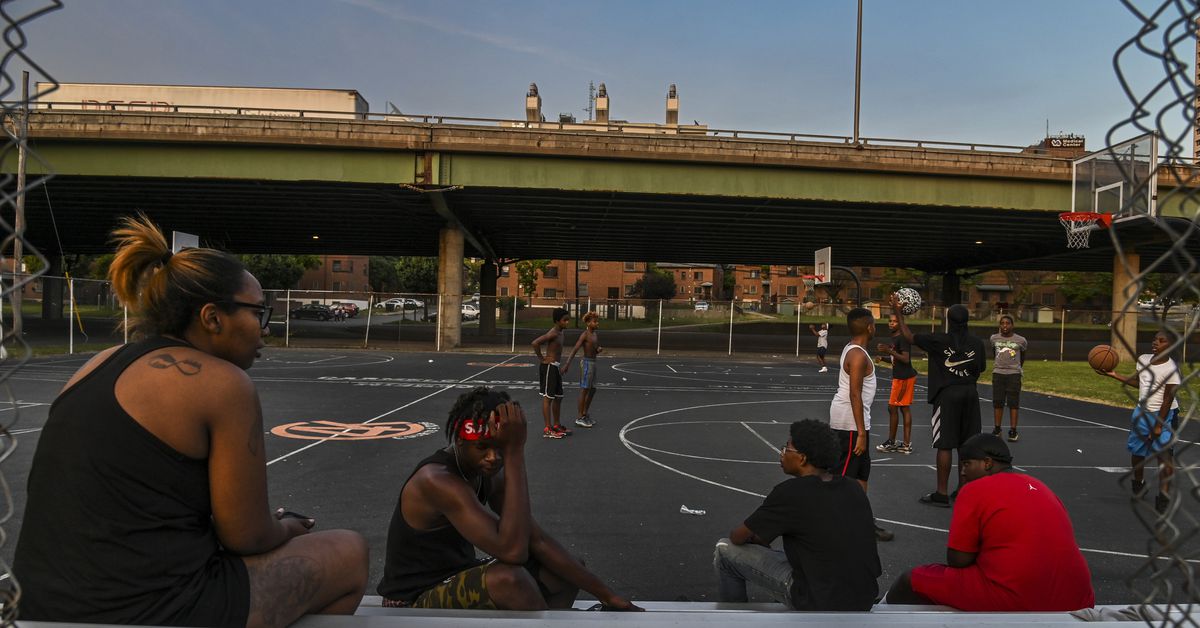
The Biden administration announced a $1 billion effort to rectify racist infrastructure decisions of the past, such as highways that were built by bulldozing Black communities.
The program, which the Department of Transportation is calling “Reconnecting Communities,” will in some cases tear down highways that were built with the expressed purpose of creating physical barriers between mostly Black and minority communities. Other projects will focus on building new infrastructure, like greenways to promote cycling and walking or transit programs, like rapid bus lines to reconnect communities to urban cores.
“Our focus isn’t about assigning blame. It isn’t about getting caught up in guilt or regret. It is about fixing a problem,” said Transportation Secretary Pete Buttigieg in a briefing with reporters. “It is about mending what has been broken, especially when the damage was done through taxpayer dollars.”
Buttigieg traveled to Birmingham, Alabama, Thursday to announce that the department was now accepting applications for the Reconnecting Communities pilot program. Birmingham officials plan on using federal funds from the program to finance a new bus rapid transit system in the city.
The money, which will be spread out over five years, was included in the bipartisan infrastructure bill that was signed into law by President Joe Biden late last year. Of the $1 billion dedicated to the pilot program, $195 million will be available in 2022, while $50 million will go toward planning activities for communities that may be early in the application process.
Officials said that preference will be given to “economically disadvantaged communities, especially those with projects that are focused on equity and environmental justice, have strong community engagement and stewardship, and a commitment to shared prosperity and equitable development.”
There are numerous egregious examples of infrastructure projects across the 20th century that were designed to disadvantage low-income communities, especially Black and Hispanic people. For example, the notorious urban planner, Robert Moses, designed a parkway to Jones Beach on Long Island with a series of overpasses that were too short to accommodate buses, essentially cutting off Black and Puerto Rican residents’ access to the beach.
Other examples include Syracuse, where Interstate 80 was purposefully built through a thriving Black neighborhood in the 1960s, displacing hundreds of residents. This fall, New York State plans on starting the process of tearing down the elevated highway, sending slower traffic to street level and faster traffic around the city on what is now I-481.
Stephanie Pollack, deputy administrator at the Federal Highway Administration, said there is a historic opportunity to right the wrongs of the past by investing in high-quality public transportation, pedestrian walkways, and linear parks and trails that encourage walking, biking, and improved mobility for nearby residents.
“Where current transportation infrastructure creates barriers to community connectivity, we can support investments in retrofitting new roadway designs, complete street conversions, and main street revitalizations,” she said.



/cdn.vox-cdn.com/uploads/chorus_asset/file/25547226/1242875577.jpg)
/cdn.vox-cdn.com/uploads/chorus_asset/file/25546751/ES601_WEBR_GalleryImages_KitchenCounterLineUp_2048x2048.jpg)

